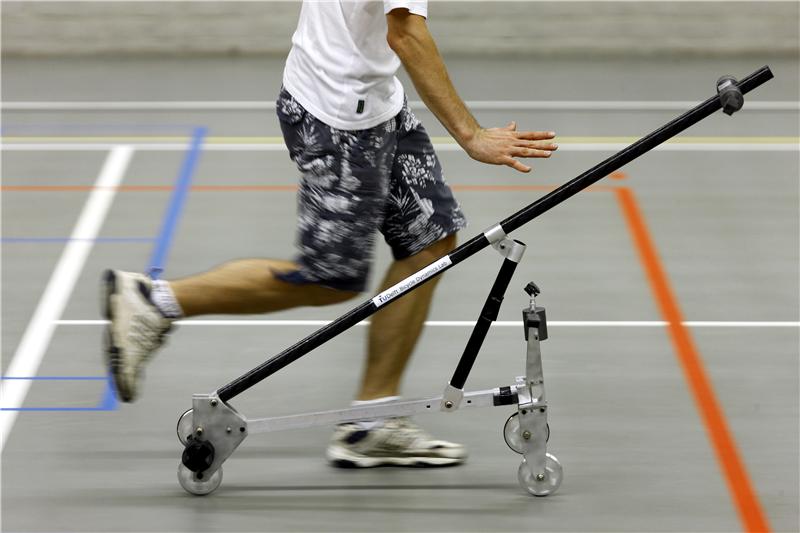Since the bicycle was invented, scientists have postulated various reasons as to why a bicycle is self stable above a certain speed. The consensus has been that a bicycle's stability is related to two factors: First, the rotating wheels of the bicycle provide stability through gyroscopic effects; secondly, that the ‘trail’, the distance by which the contact point of the front wheel trails behind the steering axis, plays an important part.
A new study in Science claims to have settled the issue - gyroscopic effects and trail help, says researcher Dr Arend Schwab of the 3mE faculty at TU Delft, but are not necessary above a certain speed . In a 2007 Proceedings of the Royal Society article (doi:10.1098/rspa.2007.1857), a mathematical model with around 25 physical parameters was developed at the time which appeared to predict whether, and at what speeds, a particular design of bicycle would be stable.
The authors designed and constructed a Two Mass Skate bicycle, with small and counter-rotating wheels, which means there is no gyroscopic effect to speak of, and a small negative trail (in other words, where the point of contact of the front wheel is marginally in front of the steering axis). Yet the bicycle remained stable when moving.

Self-stable experimental TMS bicycle rolling and balancing (photo by Sam Rentmeester/FMAX)
"It was not easy," explains PhD student Jodi Kooijman, who carried out most of the experimental work. "The first prototype did not work, and we had almost given up hope after a number of iteration attempts, when we suddenly found ourselves able to show the stability. But of course everything has to fall into place. You have to deal with the ground surface, for example, which has to have exactly the right roughness and stiffness. In Sporthal II of TU Delft we found all the right conditions."
The result is that they have shown that mass distribution is also important for stability, especially the location of the center of mass of the bicycle's steering mechanism. "For a bicycle to be stable, the steering mechanism has to be unstable; if the bike falls, the steering should fall even more quickly," says Schwab.
Since this is in Science 2.0's applied physics section, does their theoretical insight have any use to bicycle manufacturers? Perhaps, though, like those chairs with no backs that made you sit on your knees 20 years ago, optimal does not always equal popular. While modern bicycles are the result of a fairly long evolutionary process, nothing about the basic design of the bicycle has really changed since the end of the nineteenth century so you may not see anything in the Tour de France soon.
But "manufacturers can use our model to make directed modifications to the stability of their bicycles. That may be of particular interest for unusual designs, such as recumbent bicycles, folding bicycles and cargo bicycles," says Schwab.
Citation: J.D.G. Kooijman, A. L. Schwab, J.P. Meijaard, J.M. Papadopoulos, A. Ruina, 'A Bicycle Can Be Self-Stable Without Gyroscopic or Caster Effects', Science, April 2011






Comments